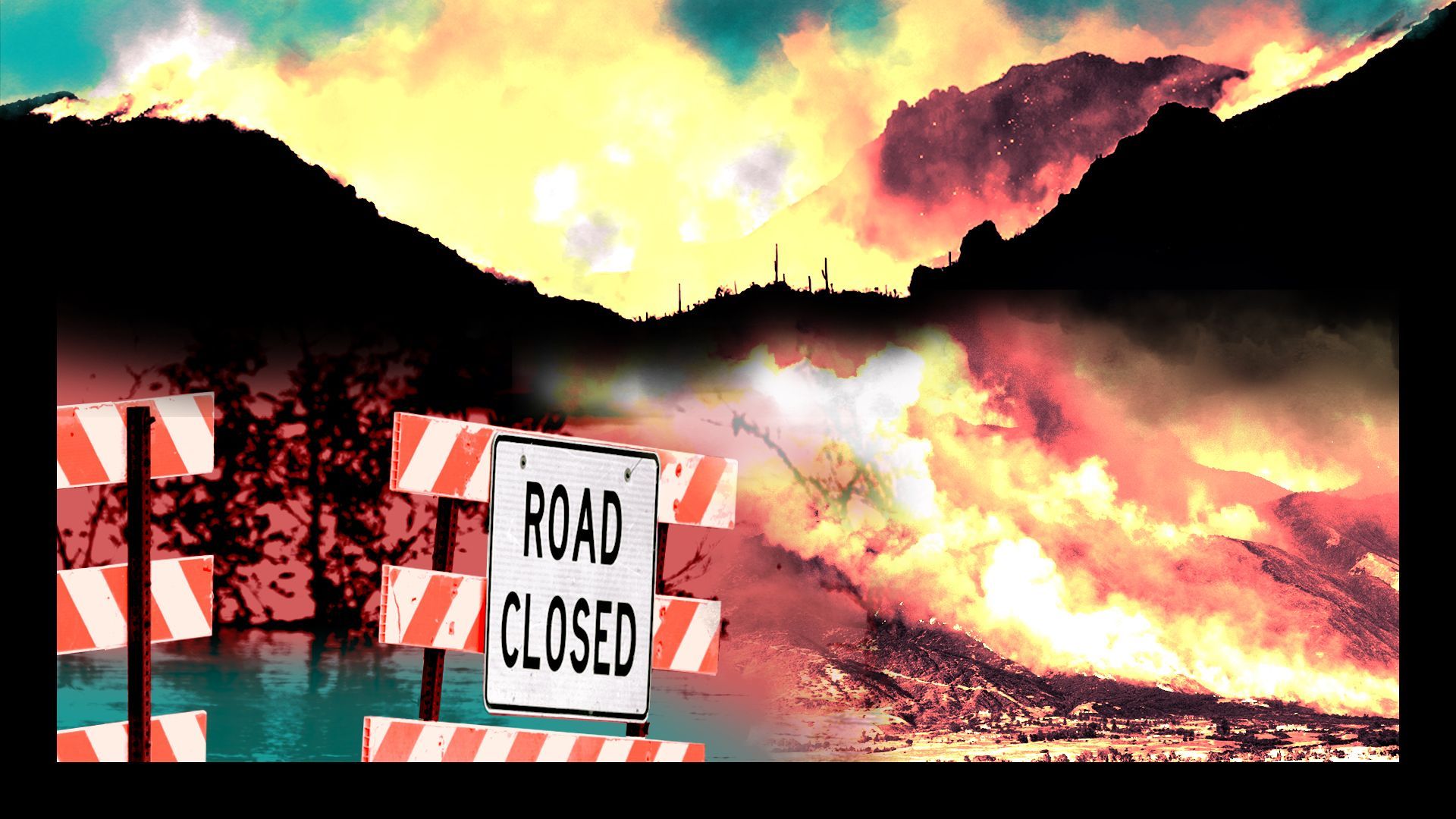Dangerous Climate Whiplash: A Global City Vulnerability Assessment

Table of Contents
Understanding Climate Whiplash's Impact on Urban Infrastructure
Climate whiplash, with its unpredictable swings between extremes, inflicts severe damage on critical urban infrastructure. The rapid transitions from drought to flooding, intense heatwaves followed by unexpected cold snaps, and violent storms create a perfect storm of challenges for city planners and engineers. This results in substantial economic losses and disruption to daily life.
- Damage to roads and bridges: Intense rainfall leads to flooding, eroding roadbeds and weakening bridge supports. Extreme temperature fluctuations cause expansion and contraction, creating cracks and structural weaknesses.
- Disruptions to water systems: Droughts severely deplete reservoirs, impacting water supply and sanitation. Conversely, flash floods can overwhelm sewage systems, contaminating water sources and spreading disease.
- Power outages: Extreme weather events, from hurricanes and wildfires to blizzards and ice storms, frequently damage power lines and substations, leading to widespread blackouts that cripple essential services.
- Transportation network failures: Flooding, landslides, and extreme heat can shut down roads, railways, and airports, disrupting emergency services, supply chains, and the daily commute. This impacts both the economy and citizens' quality of life.
- Increased risk of building collapses: Intense winds associated with storms or heavy rainfall causing flooding can lead to building damage, or even complete collapse, putting lives at risk.
Assessing Vulnerability in Different Global City Contexts
City vulnerability to climate whiplash is not uniform. It varies significantly based on geographical location, economic development level, and population density.
- Coastal cities: These urban areas face the brunt of sea-level rise, storm surges, and increased coastal erosion. The risk of inundation and damage from extreme high tides is constantly increasing. Cities like Miami, Mumbai, and Shanghai are prime examples of vulnerable coastal metropolises.
- Inland cities: While not directly threatened by sea-level rise, inland cities are vulnerable to extreme heat waves, prolonged droughts, and flash floods. These events can strain water resources, damage infrastructure, and impact public health.
- Developed vs. Developing Countries: Developed nations often have better resources and infrastructure to cope with extreme weather events, but even these cities can be overwhelmed by unprecedented events. Developing nations, however, often lack the resources for effective disaster preparedness and recovery, making them significantly more vulnerable to climate whiplash.
- Socioeconomic factors: Access to resources, quality of housing, and the availability of early warning systems all play a crucial role in determining a city's resilience. Marginalized communities are frequently the hardest hit by extreme weather events.
Strategies for Building Climate Resilience in Cities
Building climate resilience requires a multifaceted approach encompassing both mitigation and adaptation strategies.
- Investing in robust infrastructure: Designing and building infrastructure to withstand extreme weather events is paramount. This includes strengthening bridges, improving drainage systems, and constructing buildings capable of withstanding high winds and flooding.
- Implementing green infrastructure: Green infrastructure solutions, such as green roofs, urban forests, and permeable pavements, help reduce the urban heat island effect, manage stormwater runoff, and improve air quality. These natural solutions offer cost-effective and sustainable ways to boost climate resilience.
- Developing effective early warning systems: Investing in robust early warning systems allows cities to prepare for and respond effectively to impending extreme weather events. This includes advanced weather forecasting, real-time monitoring of critical infrastructure, and public alert systems.
- Improving community preparedness and response plans: Educating the public, establishing evacuation procedures, and organizing community-based disaster response teams are vital to minimizing losses and saving lives during extreme weather events.
- Promoting sustainable urban planning: Sustainable urban planning, incorporating climate change considerations into urban development, is crucial. This means carefully considering building locations, preserving green spaces, and optimizing infrastructure for resilience.
Conclusion
Climate whiplash presents a formidable challenge to global cities. Vulnerability varies considerably depending on factors ranging from geographic location and infrastructure quality to socioeconomic conditions. Proactive adaptation and mitigation strategies are not merely desirable; they are essential. Effective urban planning, investment in resilient infrastructure, and robust community engagement are fundamental to building safer and more sustainable cities. Understanding and mitigating the dangers of climate whiplash is not just crucial—it’s essential for the future of our global cities. Learn more and get involved in building climate resilience today!

Featured Posts
-
 Chicago Med Season 10 An Underrated Duos Unexpected Return
May 28, 2025
Chicago Med Season 10 An Underrated Duos Unexpected Return
May 28, 2025 -
 Miami Marlins Win 9 6 Stowers Grand Slam Seals The Victory Against Oakland
May 28, 2025
Miami Marlins Win 9 6 Stowers Grand Slam Seals The Victory Against Oakland
May 28, 2025 -
 Mc Kenna Cajuste And Ipswich Towns Injury Situation A Weekly Review
May 28, 2025
Mc Kenna Cajuste And Ipswich Towns Injury Situation A Weekly Review
May 28, 2025 -
 Jennifer Lopez American Music Awards Host For The May Show
May 28, 2025
Jennifer Lopez American Music Awards Host For The May Show
May 28, 2025 -
 Googles Veo 3 Ai Video Generator A Slop Mongers Dream A Critical Review
May 28, 2025
Googles Veo 3 Ai Video Generator A Slop Mongers Dream A Critical Review
May 28, 2025
